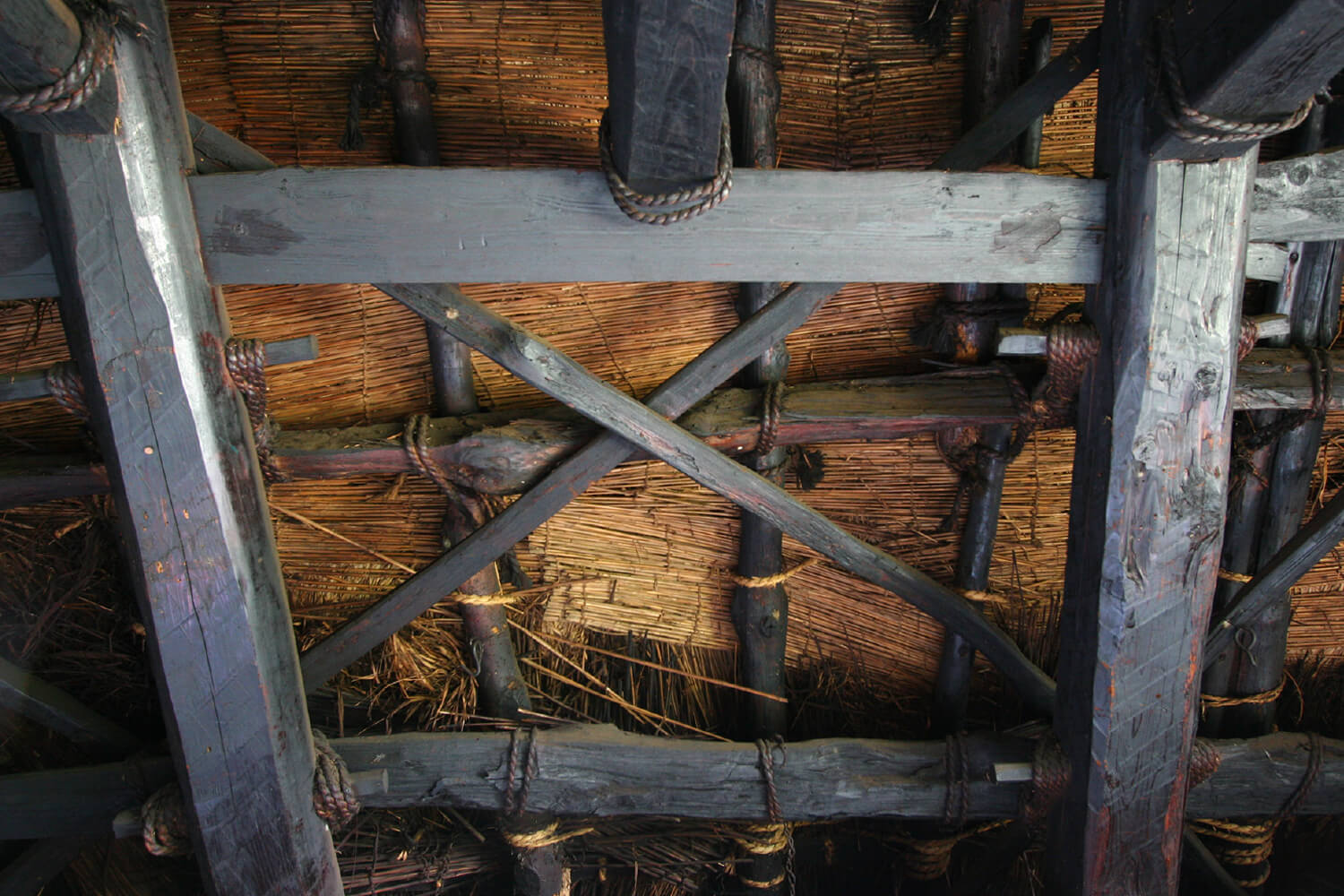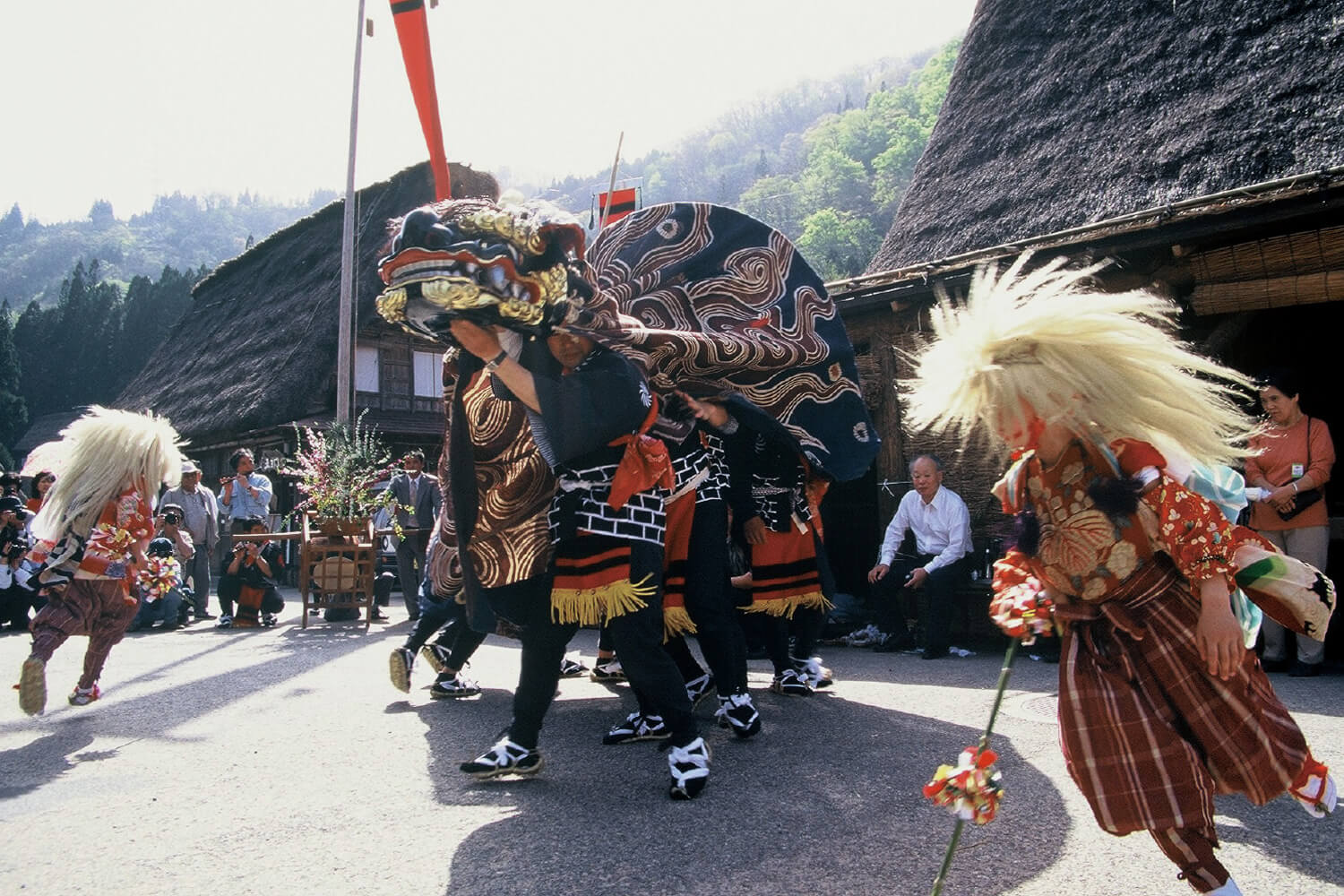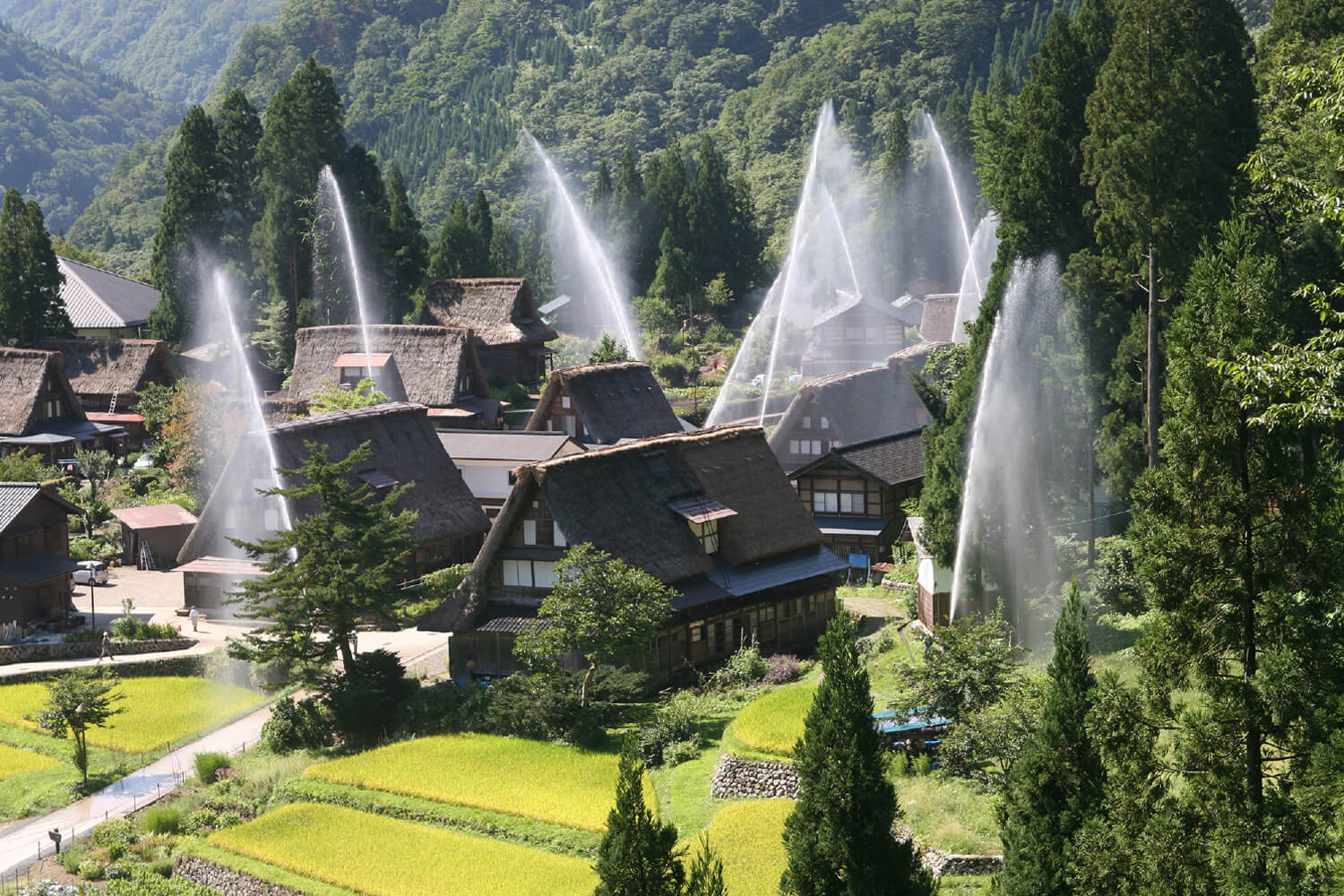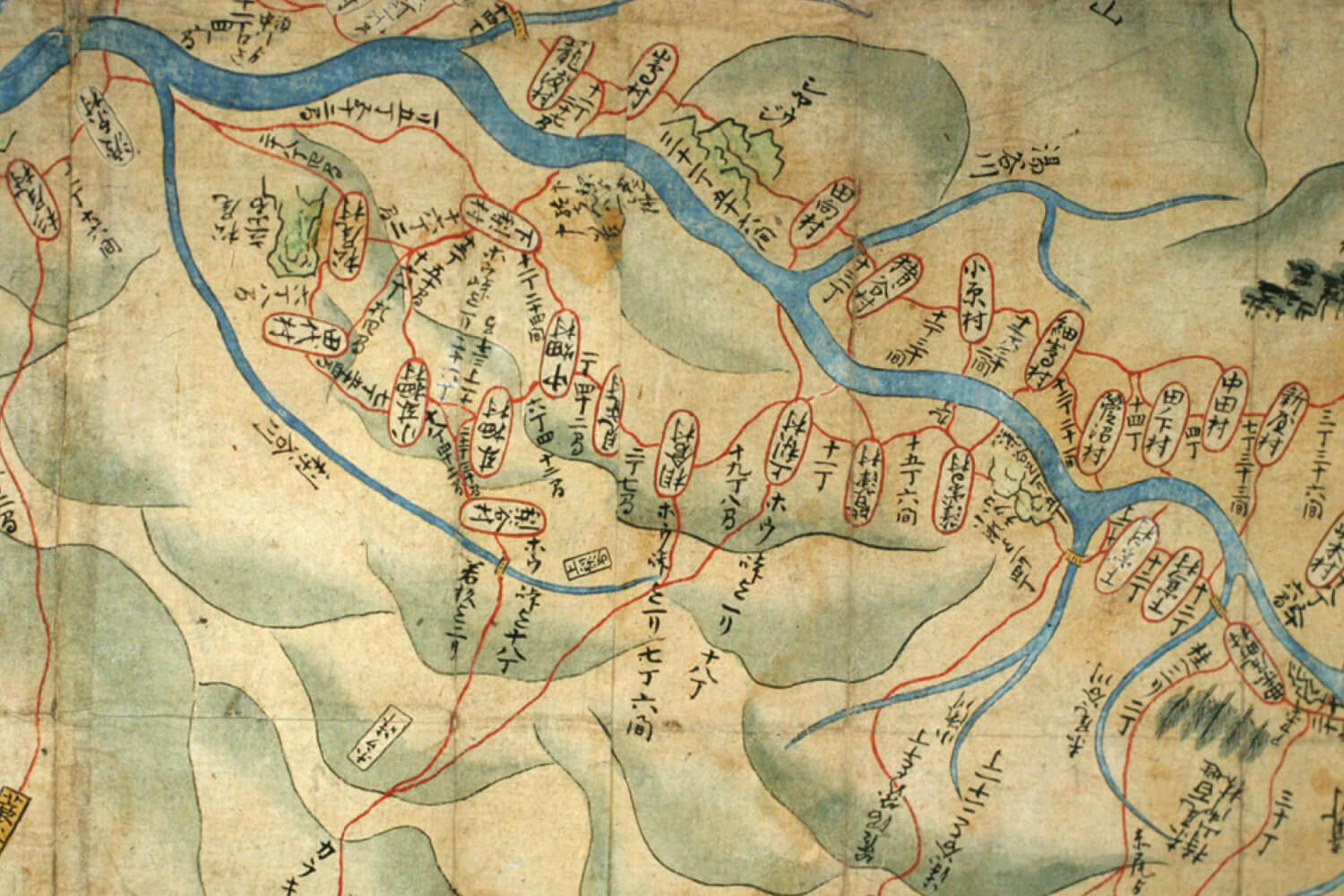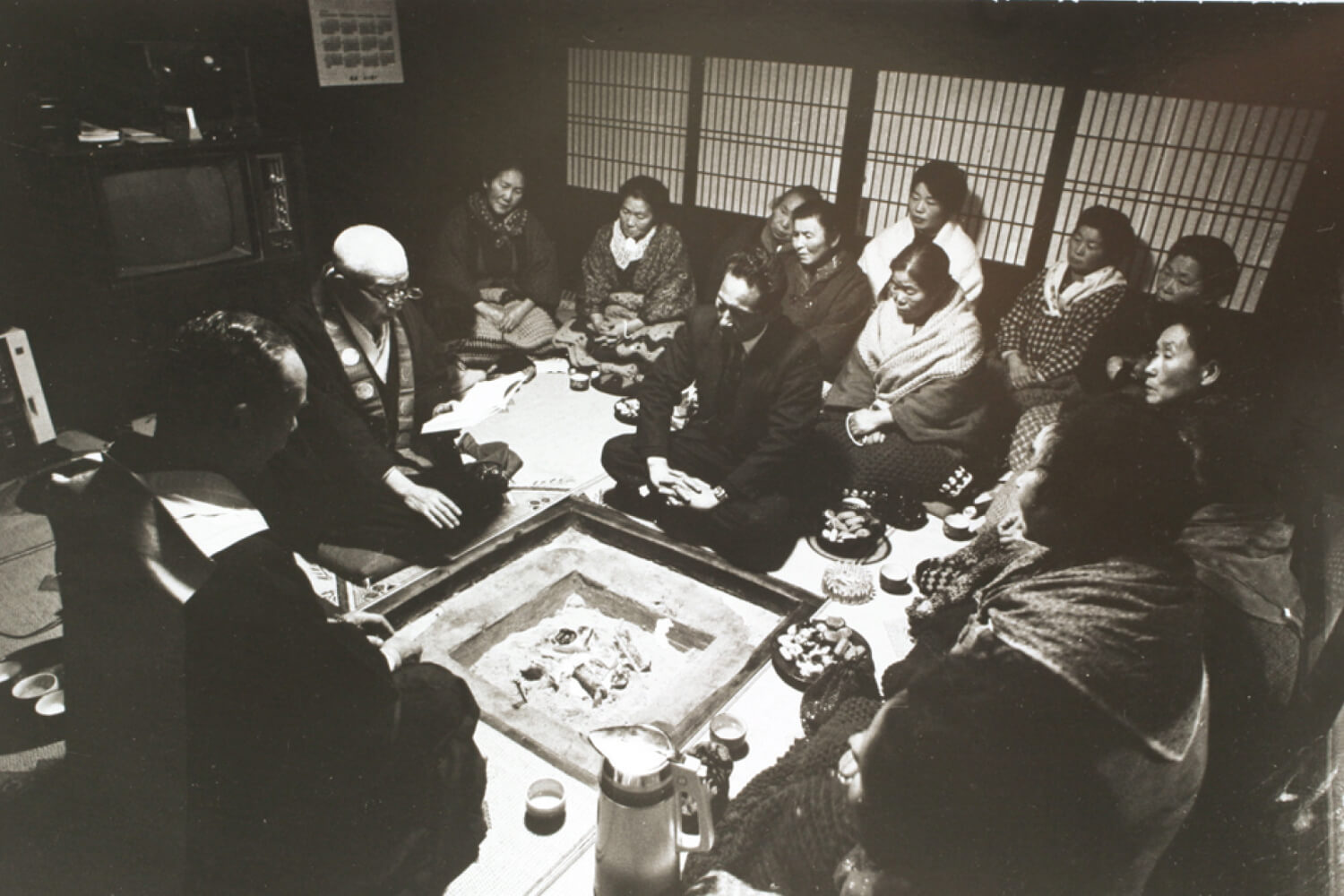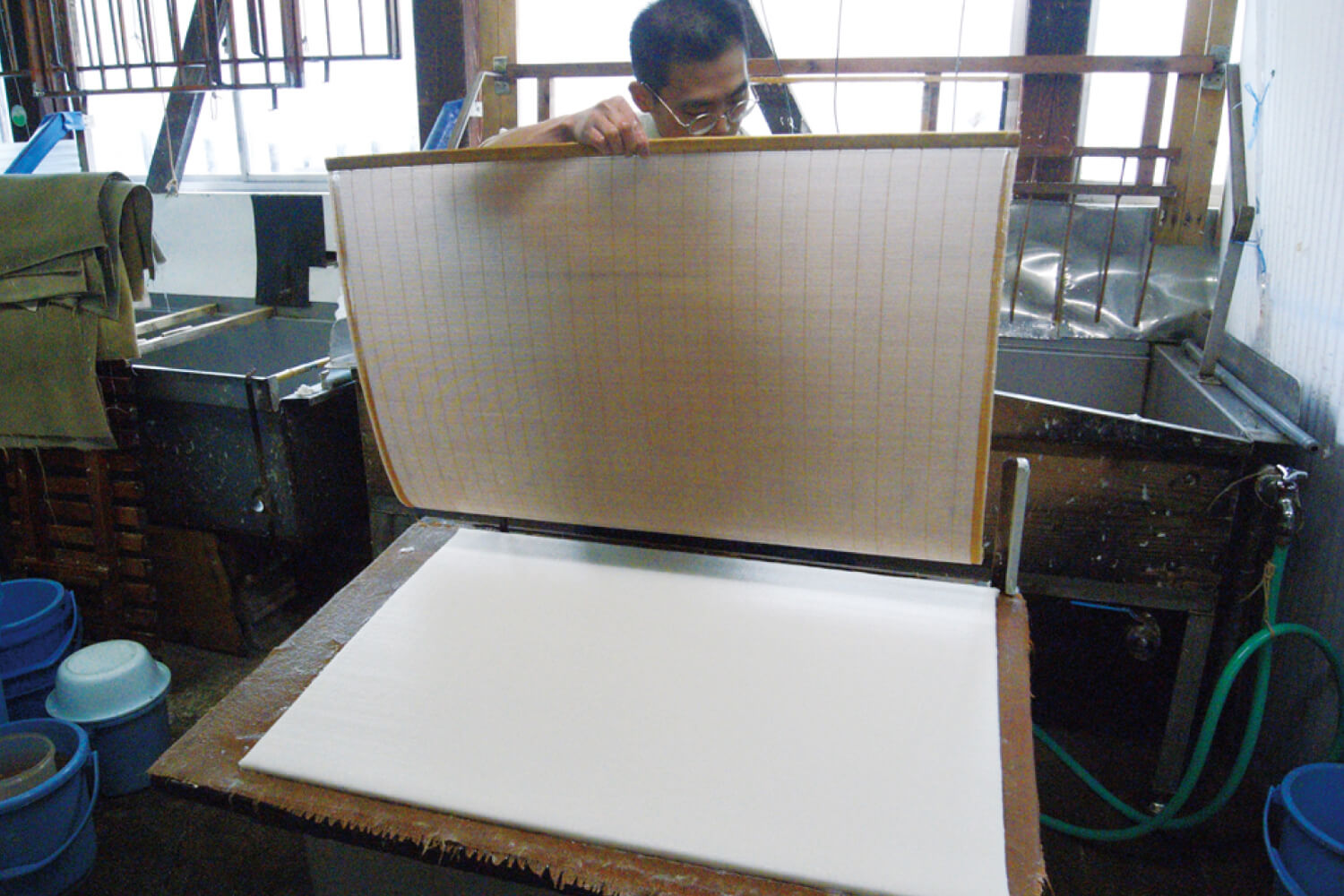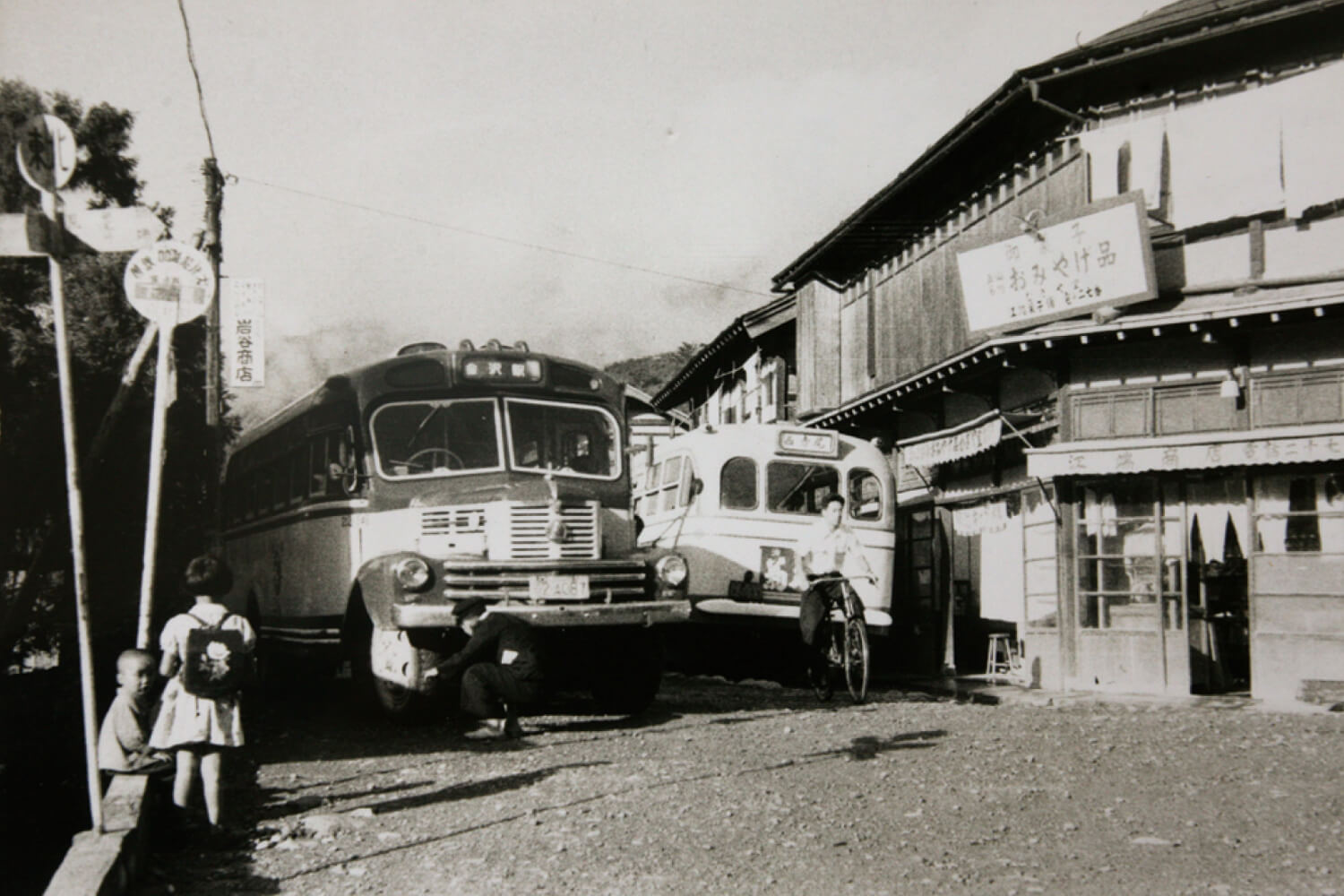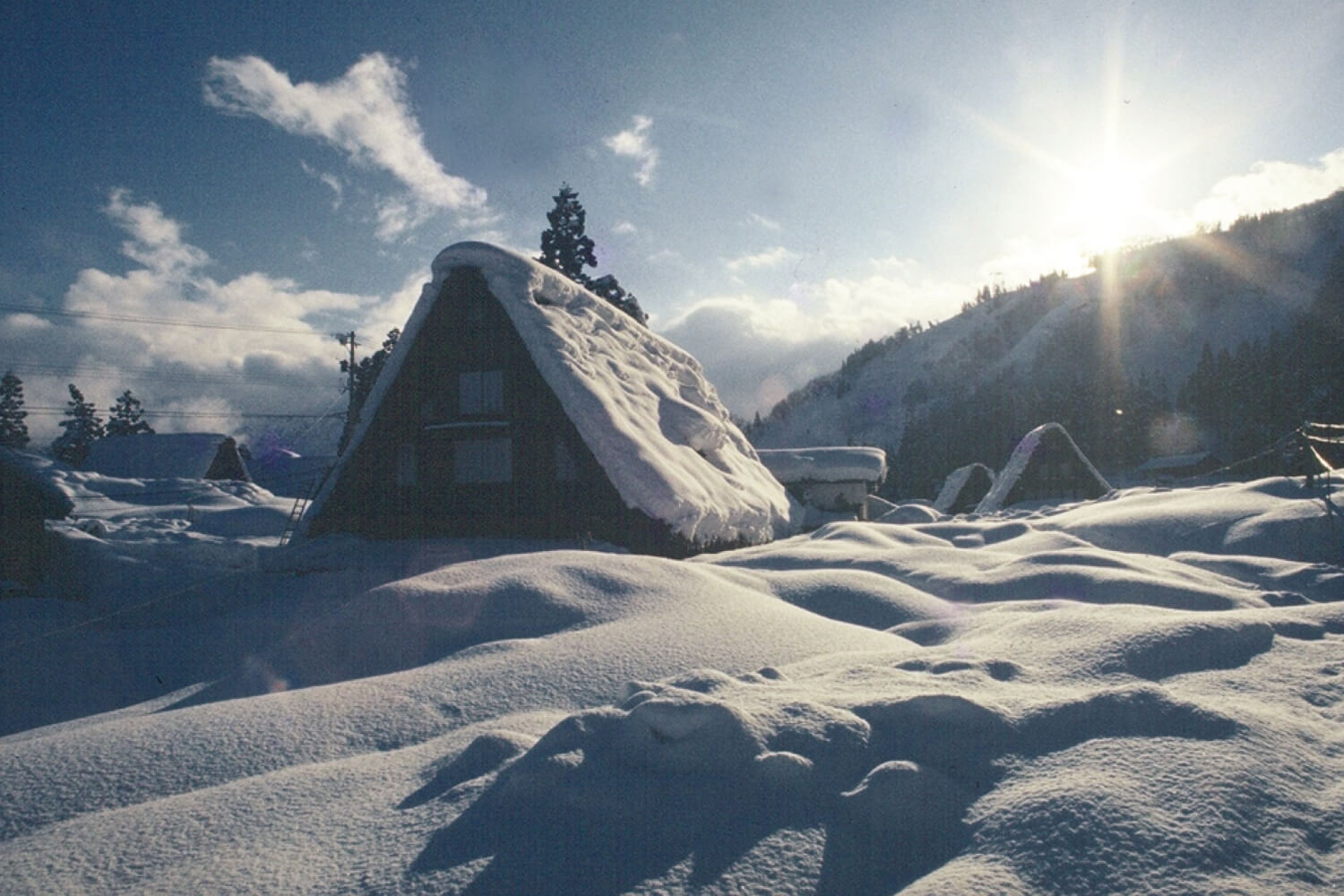Gokayama, located in the southwest of Toyama Prefecture, is one of the most heavy snowfall areas in Japan. A gabled private house with a large roof was created to carry out production activities such as sericulture while enduring this heavy snow. When you look at this building from the front, the steep roof looks like you worship toward the heavens with your hands together (gassho-style), so it has come to be called "gassho-zukuri". The construction is made by tying up with ropes in cooperation with the villagers without using nails.
Since the middle of the Showa era, the number of gassho-style buildings has decreased rapidly. Meanwhile, the Ainokura and Suganuma villages, where a relatively large number of gassho-zukuri remain, were registered as a World Heritage Site (cultural heritage) in 1995 as "Shirakawa-go / Gokayama Gassho-zukuri Village" along with the neighboring Shirakawa-go. It was because that not only the traditional houses but also the traditional life and culture were strongly preserved. The rural landscape centered on the gassho-zukuri houses was evaluated as a valuable cultural heritage in global. Even now, for example, lion dances and festivals, ancient folk songs, and Hoonko (a Jodo Shinshu Buddhism devotional event) are carefully inherited.
There are 20 "gassho-zukuri" houses in the Ainokura village where Yusuke is located. Many of those were built from the end of the Edo period to the Meiji period, and the oldest ones are estimated to the date back to the 17th century.
1970 (Showa 45): Designated as a national historic site.
1994 (Heisei 6):"Ainokura Village and Suganuma Village" were selected as an Important Preservation Districts for Groups of Traditional Buildings.
1995 (Heisei 7): "Shirakawa-go / Gokayama Gassho-zukuri Village" were registered as a World Heritage Site (cultural heritage). "Gokayama Song and Dance" were designated as an Intangible Folk Cultural Property.

